How The Environment Affects Bud Production

- 1. Ideal conditions for cannabis
- 2. How extreme temperatures affects buds
- 2. a. How excessive heat affects buds
- 2. b. How excessive cold temperatures affects buds
- 3. How a high/low humidity affects buds
- 3. a. How high humidity affects buds
- 3. b. How low humidity affects buds
- 4. How light distance affects buds
- 4. a. How having your lights too close can affect buds
- 4. b. How having your lights too far can affect buds
- 4. c. How light spectrum can affect buds
- 5. Tips for outdoor growers
- 6. How cannabis growing affects the environment
- 6. a. The impact of cannabis growing on energy consumption
- 6. b. The impact of cannabis growing on water consumption
- 7. Other factors that can affect the yield possibilities of your crop
- 8. In conclusion
The substrate, nutrients, and genetics are very important but the conditions affect how your plant performs its basic processes and will end up affecting bud quality. This is why it can be hard to get dense resinous buds if the growing conditions are less-than-ideal; The substrate, nutrients, and genetics are very important but the temperature, light fixture, and humidity will affect how a cannabis plant performs its basic processes, this is why the growing environment overall is more important than the other factors and should be adjusted for each stage of a cannabis seeds' growth and maintained to allow your plant to develop to its maximum.
1. Ideal Conditions For Cannabis
It doesn’t matter if you’re growing photoperiod or autoflowering strains, all of them will go through a germination stage (obviously), a seedling stage, a vegetative stage, and finally a flowering stage.
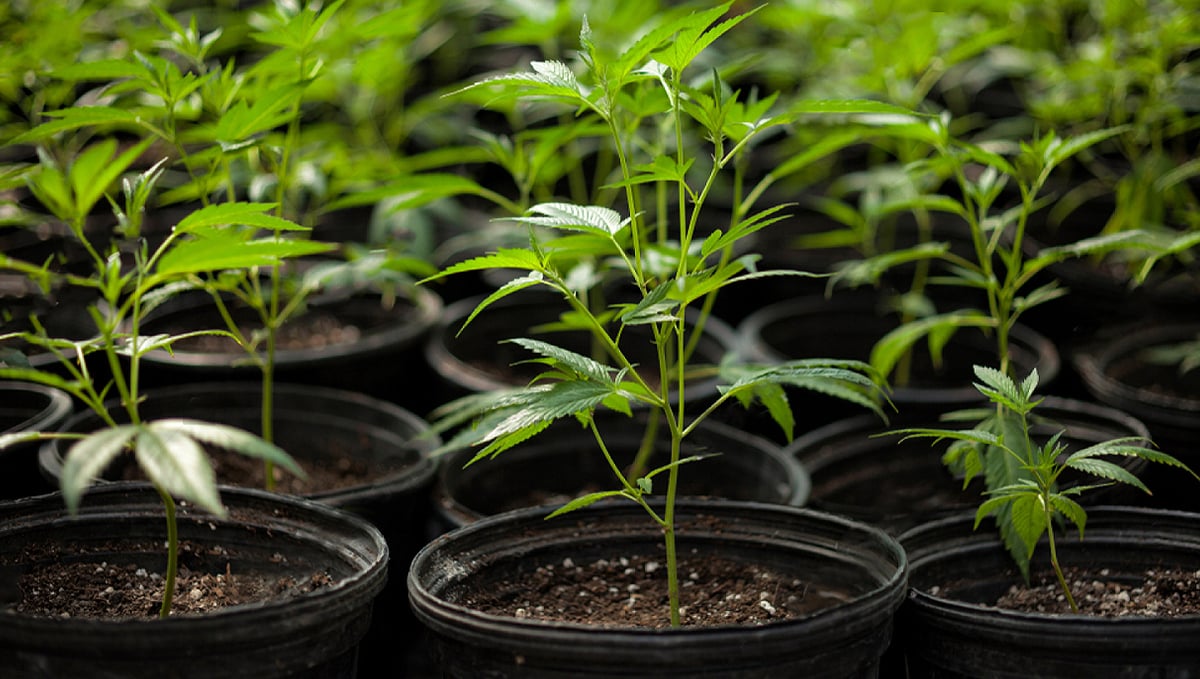
Now, the conditions in all of the stages mentioned will affect plant growth but won’t affect bud production but it’s highly recommended you maintain ideal conditions so your plants grow as they should, developing a strong stem and branches to be able to withstand the big dense buds that will develop in the flowering stage.
| Ideal Conditions For The Vegetative Stage | ||
|---|---|---|
| Relative humidity | Temperature (day/night) | |
| Seedling Stage | 65-70% | 20-25°C / 15-20°C |
| Vegetative Stage | 40-70% | 22-28°C / 17-23°C |
Now, during the flowering stage, things change; The flowering stage (including the pre-flowering stage) is when the plants start producing the flowers so bad growing conditions or any kind of stress can end up affecting the final quality and quantity of your harvest.
This happens because the environment, either indoors or outdoors, can affect trichome production as well as bud size and density so here are a couple of things you should have in mind:
- Growing conditions affect trichome production which ends up affecting cannabinoids, terpenes, and flavonoids production (responsible for potency, smell, and flavor).
- The environment has a higher impact on bud production than fertilizers.
- A good environment is the best way to allow your plant to show its maximum potential.
So if you want to make the most and get the best possible quality out of each seed, you should adjust the conditions to be as close as possible to the following conditions:
| Ideal Conditions For The Flowering Stage | ||
|---|---|---|
| Relative humidity | Temperature (day/night) | |
| Flowering Stage | 45-55% | 20-26°C / 15-21°C |
| 1-2 Weeks before harvest | 40-45% | 18-24°C / 13-18°C |
Don’t forget that there should be enough airflow so you should also have a fan and if possible, an exhaust fan to help exchange air and keep the air inside your grow tent fresh, obviously, this won’t be needed when growing outdoors.
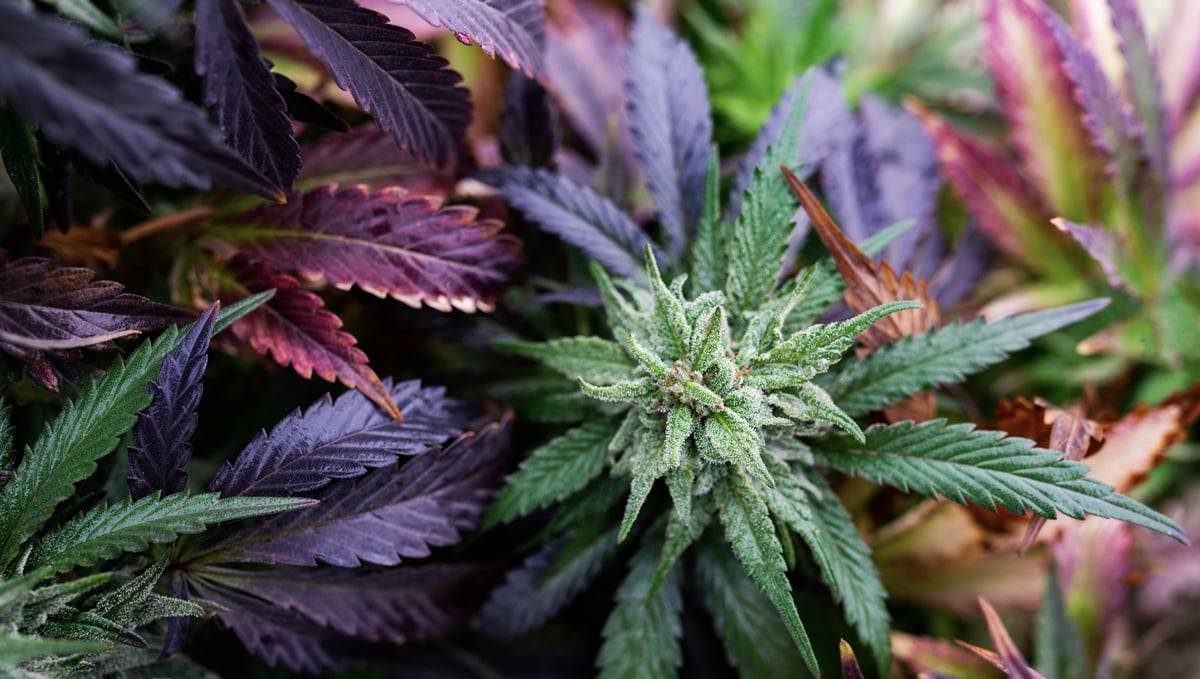
So now that you know what the ideal conditions are, here’s what can go wrong if the conditions are too extreme outdoors or if you fail to maintain good conditions indoors, either because of an equipment failure or something else.
2. How Extreme temperatures Affects Buds
Some strains are quite resistant to harsher climates but, in general, cannabis plants prefer the conditions mentioned above. If you live in a hotter or colder place, you may still get a really good harvest but if the conditions are too extreme, your plant may struggle to grow or may even end up affecting the buds directly, so here’s how extreme temperatures can affect your precious buds.
How Excessive Heat Affects Buds
Excessive heat can lower the quality of the buds during the flowering stage because your plants will struggle to perform their basic processes if the other elements are not on point.
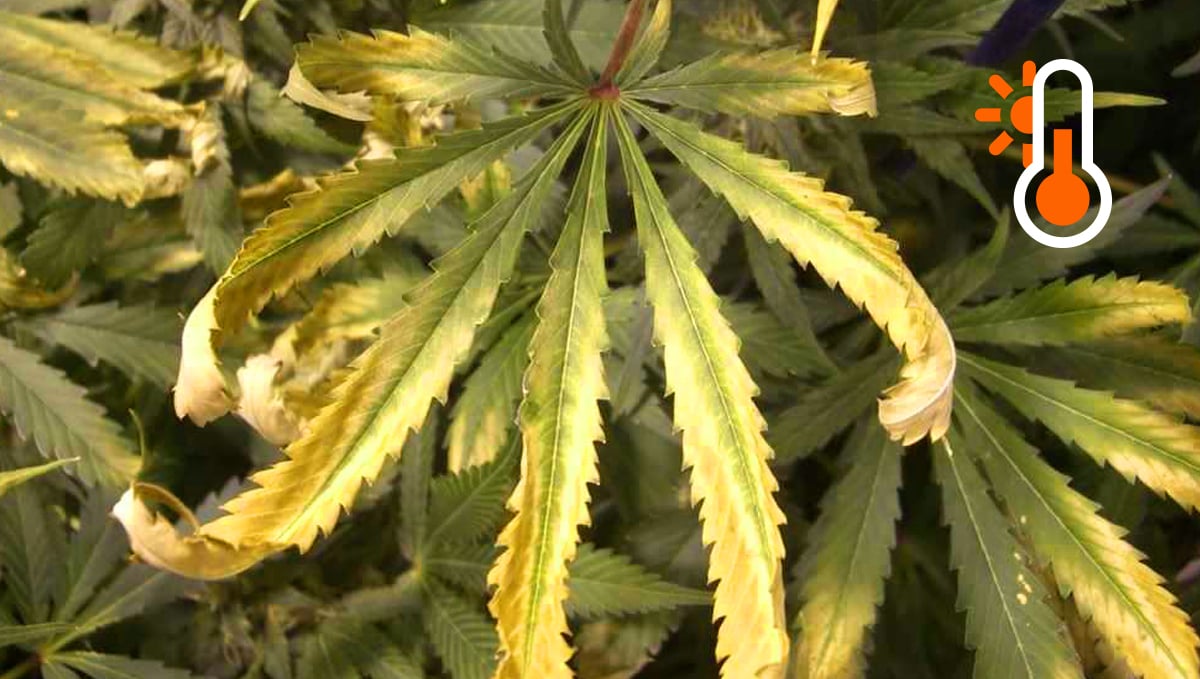
There are some strains that can withstand hotter climates but the majority can start to show symptoms if the temperature is 27-30°C or above. So when exposed to excessive heat for days, the buds may end up airy, discolored, harsh to the throat, with a poor taste and smell, and a low potency but if the excessive heat continues for weeks, the following problems can occur:
- Reduced smell and potency;
- Plants turning hermaphrodite;
- Foxtails;
- May attract bugs such as spider mites or powdery mildew.
How Excessive Cold Temperatures Affects Buds
In the flowering stage, it may be a good idea to lower the temperatures a little bit, this can enhance potency, smell, and bud size, helping bring out unique colors but if the environment is below 15-16°C it may end up affecting the buds in a bad way.

So make sure that if you’re lowering the temperatures for the flowering stage, do it gradually and always pay attention so the temperature doesn’t get too low, to avoid the following:
- Stunted growth;
- Easier to get pests and bugs;
- Plants more susceptible to overwatering and nutrient deficiencies;
- Leaf curling and yellowing.
Now, cold won’t affect the buds directly but will affect plant growth which will end up affecting bud production, resulting in airy buds and smaller buds.
3. How A High/Low Humidity Affects Buds
A less-than-ideal humidity level isn’t too serious because it won’t affect buds directly, so you shouldn’t have to worry that much but if this condition is kept for too long, it may make your plant more susceptible to other problems such as bugs and pests. This will also depend on the ventilation, temperature, and how often you water so it can be fairly simple to deal with, just remember that mold can end up killing your plants, so despite not being too serious, you should definitely keep an eye for pests.
How High Humidity Affects Buds
As mentioned before, during the flowering stage the relative humidity should be around 40-55%, this will allow the buds to grow properly and not lose much mass when drying which is a must if you don't want to end up with airy buds after drying your buds.
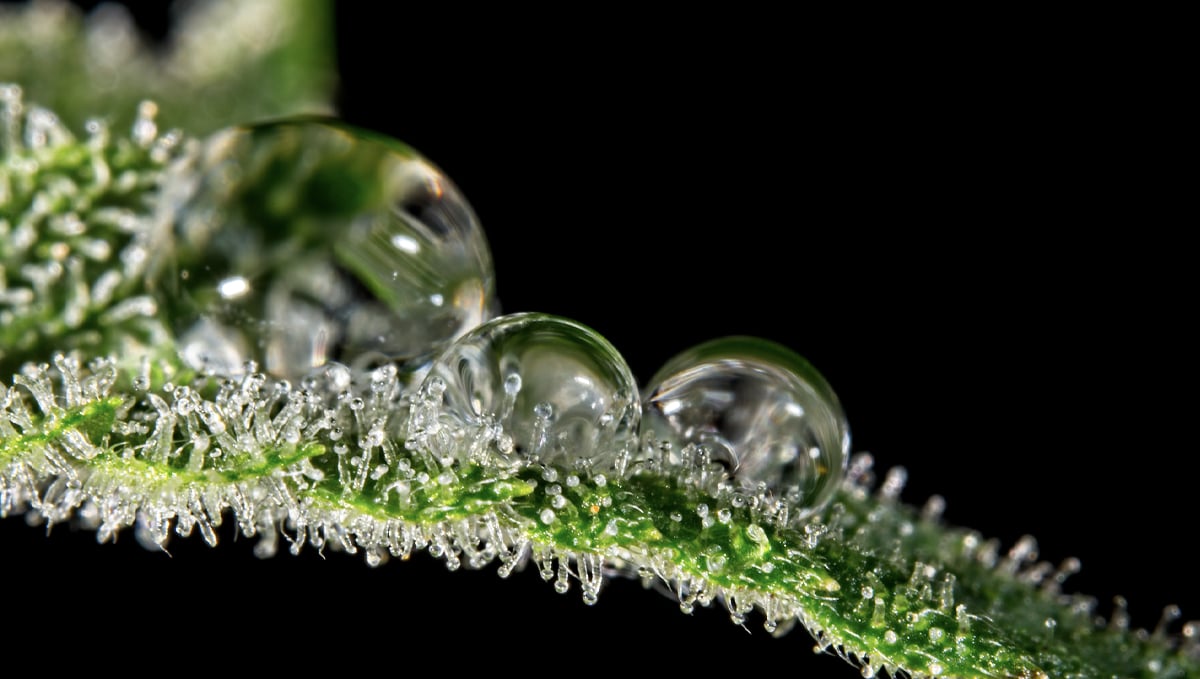
Obviously, you can get away with a higher humidity as most growers without the proper equipment do, but if the humidity is above 60%, there are a couple of things you should be aware of:
- Increased chance of getting bud rot, mold, and powdery mildew;
- Slower plant growth and reduced yields;
- Nutrient deficiencies due to poor water absorption;
- Popcorn buds.
Just like when dealing with too much cold, a high humidity won’t affect the buds directly but can affect photosynthesis and transpiration, which can cause the problems mentioned and end up affecting the buds.
How Low Humidity Affects Buds
When dealing with low humidity, the effects may not be as bad, especially if your plants have been growing under low humidity (under 35%) since the beginning. So when growing under low humidity, it’s possible that trichome production is slower and you may experience unhealthy plant growth or stress but the symptoms won’t be as grave as when dealing with excessive heat for example.
4. How Light Distance Affects Buds
As you may know, plants need light to perform photosynthesis and grow, so the light you provide is essential for your plants to thrive. In most cases, lack of light is the main problem but when growing with more modern LEDs, the light intensity could be too much and end up affecting bud quality, this is why it’s very important to adjust your light fixture’s height according to the growth stage your plant is in.
How Having Your Lights Too Close Can Affect Buds
Keeping the lights at the right distance is vital to obtain the best bud quality and yields, very light fixture has its optimal distance, for example, most light bulbs are best kept at around 45-60cm while the ideal distance for LEDs will differ according to the quality and intensity but, in general, are recommended to be kept at around 30-50cm so make sure that you always check the recommendations to avoid this kind of problems.
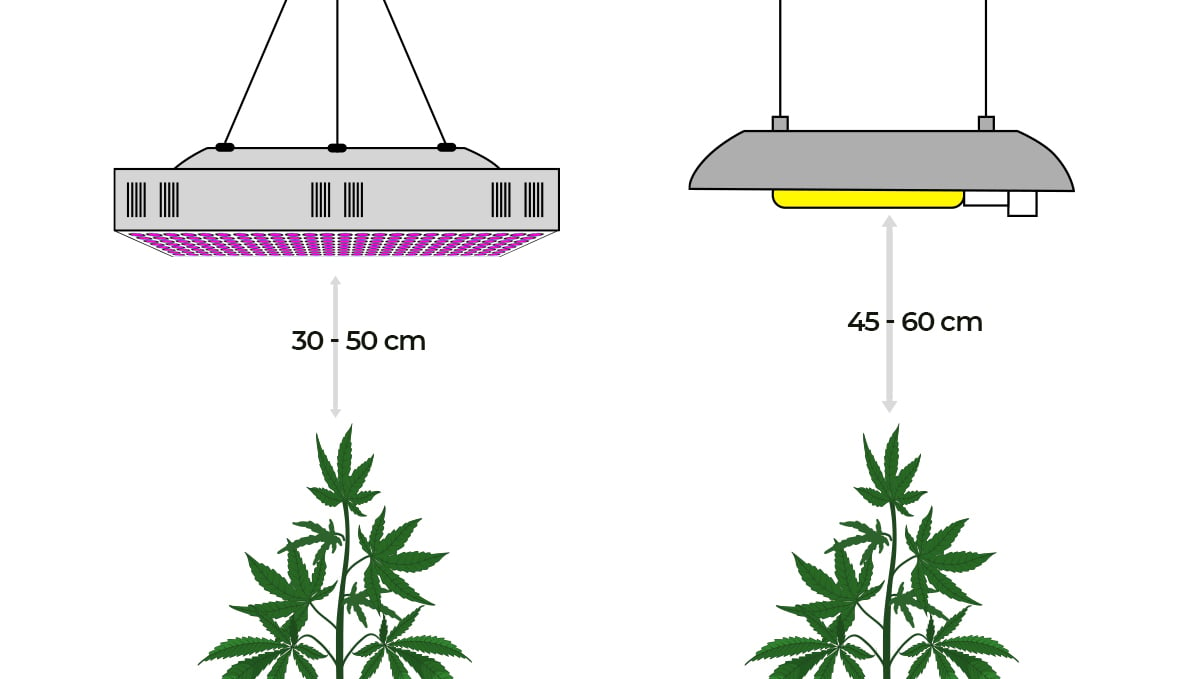
Even if everything is on point, having the light fixture too close to your plants can harm them, this won’t happen when growing outdoors but indoors it’s possible to have the light hanging too low, and end up causing the following problems:
- Evaporate terpenes and cannabinoids;
- Foxtails (related to heat stress);
- Hermaphrodites or the appearance of seeds in the buds;
- Bud bleaching.
How Having Your Lights Too Far Can Affect Buds
Now, when the lights are too far there shouldn’t be major problems, this can cause the plants to stretch or grow less as long as they’re not too far away. This won't happen when growing outdoors unless your plants are not getting direct sunlight, as long as they're getting direct sunlight you shouldn't have a problem at all.
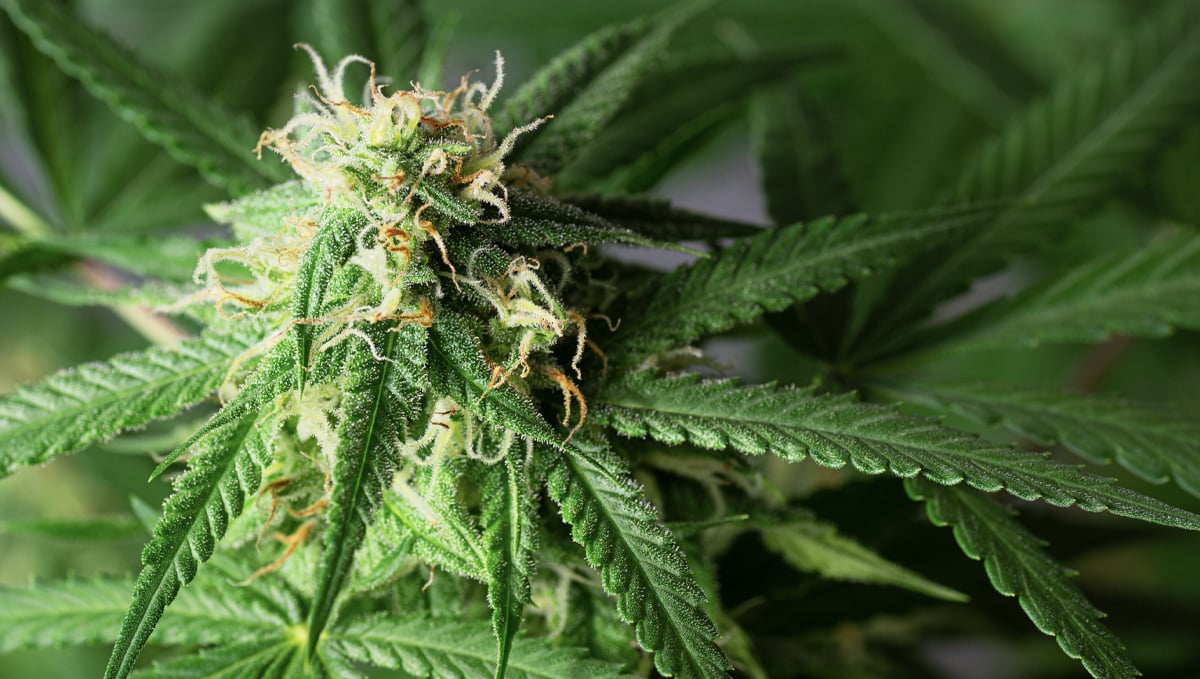
If the light fixture is way too far, your plants may not be able to perform photosynthesis and plant growth may stop altogether. Other than that, there aren’t serious problems other than buds not getting as big and dense as they could, but won’t cause any major problems.
How Light Spectrum Can Affect Buds
Apart from light intensity, the Light spectrum can also affect bud quality…but how? Check out the table below to learn more!
| Light Spectrum and Bud Quality | |
|---|---|
| Ultraviolet (UV) | Increased trichome production |
| Blue | Smaller buds but can shorten flowering |
| Green | Needed for healthy plant growth |
| Red | Bigger flowers but can extend flowering |
| Far-Red | Can enhance bud development |
Keep in mind that the light emitted by good light fixtures often appears white or yellowish. These grow lights usually have lots of red and far-red, and a bit of blue and green. Some light fixtures can also produce UV light as a bonus so make sure to wear eye protection at all times!
5. Tips For Outdoor Growers
When growing outdoors there’s not much you can do to provide better conditions for your plants, if you’re suffering from high (or low) temperatures or humidity levels, it may be hard to fix. For example, if it’s too hot you may want to cover your plants with a shade net to allow them to cool off a bit, or if you’re dealing with lower temperatures, you want to cover your plants with a plastic sheet to protect them from strong wind and cold, but sometimes this isn’t enough. If the conditions are too harsh, the best thing to do is to plan your grow cycle ahead so your plant grows during the outdoor season, this way you prevent all (or at least some) of the problems mentioned.
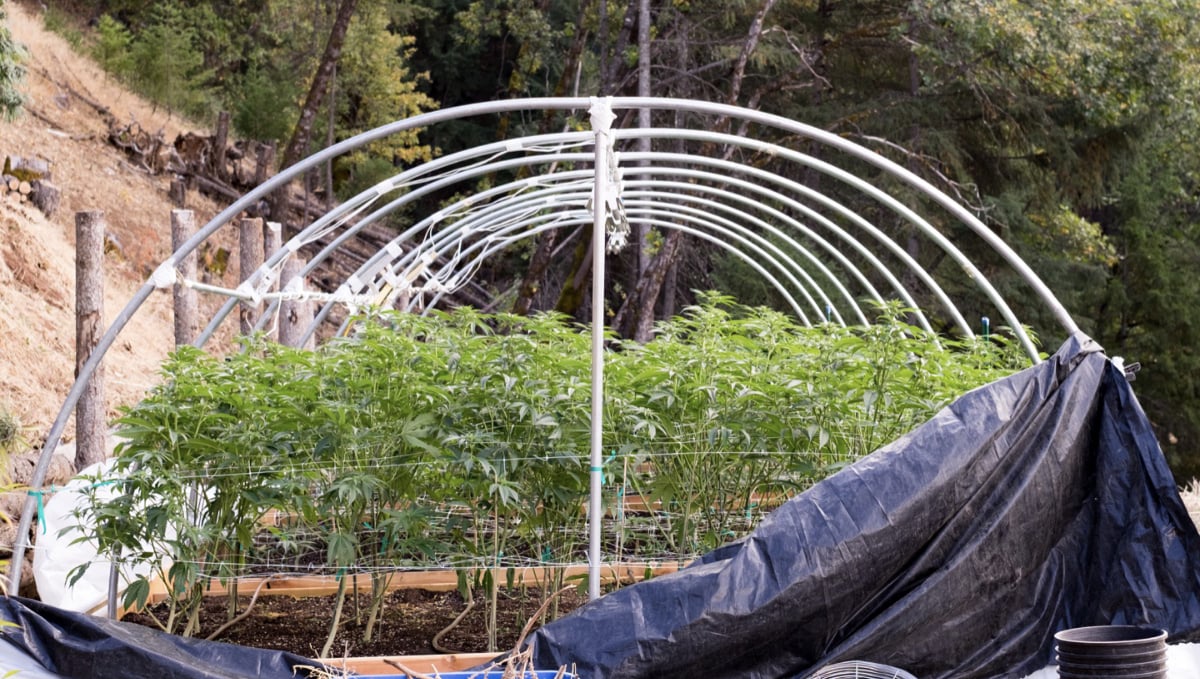
Also, depending on where you live, there could be cats, rabbits, gophers, or dogs that may find your plants interesting and may want to eat a couple of leaves (or branches); Obviously, they don’t know how important your cannabis plants are so you shouldn’t harm them, but what you can do is place chicken wire under your pots this way gophers and rabbits won’t be able to eat the roots and, if needed, surround your plant with chicken wire, this way other animals that don’t live underground won’t munch on your precious cannabis plants.
6. How Cannabis Growing Affects the Environment
Now you know exactly how the environment can affect your precious cannabis flowers but have you thought about how growing these flowers can affect the environment? Let’s read a bit more.
The Impact of Cannabis Growing on Energy Consumption
A commercial growing facility usually consumes electricity 24/7, because of the lights, fans, automatic irrigation, etc… Research conducted a couple of years ago claims that an average household consumes 630 kWh per month whereas a grow facility can use up to 41.808 kWh. This means that an indoor facility can consume anywhere from 2.000 to 3.000 kWh per pound of weed produced. Now, some jurisdictions are taking action to encourage renewable or green energy in these facilities, but as mentioned, depends from jurisdiction to jurisdiction.
The Impact of Cannabis Growing on Water Consumption
According to another report, the amount of water needed to grow cannabis plants outdoors can reach up to 3 billion liters of water per km2 of greenhouse space and up to 430 million liters of water per km2 of outdoor space. As a result, commercial facilities are always looking for eco-friendly alternatives such as filtering and recycling water via a reverse-osmosis system or using special systems to capture and reuse wastewater. Bigger facilities are often recurring to hydroponic systems as it’s easier to recycle water and needs up to 10 times less water than traditional methods.
This is super important information as most home growers do not take any of these into consideration. Always keep in mind that yes, it’s better to grow your own instead of buying but it’s essential you take an eco-friendly approach as you’re also using lights, growing equipment, and waste which can contribute to global warming.
7. Other Factors That Can Affect the Yield Possibilities of Your Crop
While the environment you provide can and will have a huge impact on the final yield size of your cannabis crop, there is a range of separate and equally important factors that you will need to take into consideration. Cannabis cultivation is a complex art that requires a level of care and attention to many different elements if you want to produce bumper yields, and this is something that most new growers come to understand throughout the first year or so of growing. So, apart from environmental controls, what are the most important components to take into consideration when trying to boost not only the final yield size but also the quality of the buds?
Genetics
Starting out with the right genetics is hugely important. You just cannot expect to grow high-producing plants with inferior seeds, so the starting point is critical. Choose a strain that is known to produce large yields, and make sure you are buying the seeds from a seed bank that has a good reputation with stable genetics. The seed bank marketplace was once dominated by just a few large companies, but thanks to the legal cannabis revolution currently taking place, this has changed considerably in the previous 5 years. These days, you can find new and exciting strains from a range of reliable seed banks, with many specializing in just one specific strain or variety. But there are also a bunch of seed producers with less-than-desirable genetics.
Then there is the decision over whether to grow photoperiod or autoflowering strains. Each comes with a set of both advantages and disadvantages, but if you are looking for plants that go from seed to harvest in less than 12 weeks (and less than 10 in some cases), while still producing a ridiculous amount of that dankest stick-icky then we recommend checking out autos. Autoflowering plants also come with the added advantage of:
- Higher pest and mold resistance than many photoperiod strains.
- Lower nutritional needs, saving you money on expensive bottle nutrients.
- More manageable sizing, making discreet outdoor cultivation much easier.
- Perpetual harvest routines are easier to implement thanks to the fact they can flower under any indoor light schedule.
Cultivation Style
If big yields are your number one goal then you should probably stick to hydroponic cultivation. Why? Simple. Hydroponics, when implemented correctly, cannot be beaten in terms of yield possibilities. This style of cultivation allows you to control the exact makeup of the nutrient solution that is provided to the plants, and also allows for a greater level of oxygen distribution to the root zone. Perfect for maximum growth rates.
Or, if soil cultivation is more your thing then make sure you are using one that has been specifically designed with big yields in mind. This means looking out for soil blends that have been tailored to provide both optimal nutrient availability and ideal moisture retention. The other option is coco-coir. Coco is a hydroponic medium made from the ground-up husks of coconuts and is a great starting point for anyone looking to journey down the hydro road. It offers many of the benefits of both soil and hydroponic cultivation styles, while also being a supremely easy substrate to work with.
Nutrients and Feeding Schedules
The key here is balance. Too much of any one element or mineral can throw your plants off track, making them more prone to disease while also stunting potential growth rates. As a general rule of thumb, we recommend grabbing your nutrients from one of the larger, reputable nutrient brands. Options like:
- Fox Farm
- CANNA
- Advanced Nutrients
- Botanicare
- HESI
- House & Garden
- LOTUS Nutrients
This is just a short cross-section of the available options, and there are many other great nutrient brands on the market. If you have a local hydroponics supplier then we recommend heading in-store and having a chat, there may be a local brand that is on offer that is a fair bit cheaper than the big names. Another thing to keep in mind is the nutrient levels you provide to your crop. While every single nutrient or supplement bottle will come with dosage instructions, they are often a little inflated. Remember, these companies make money selling nutrients, so it should come as no surprise that they may sometimes fatten the usage numbers slightly.
When growing autos, we always recommend using 1/4 of the recommended dosage to begin with and then slowly increasing the levels as the plant matures. But, if you are looking to optimize your yield, you will need to grab an EC (or TDS) tester, as well as a pH meter. These two pieces of kit are absolutely invaluable to any grower and will help you make sure that your nutrient supply is always spot on. We also recommend carrying out a weekly flush (providing only fresh, pH-regulated water). This helps keep the substrate healthy and free of any salt buildup issues.
In terms of the actual feeding schedule, there are a bunch of options to consider. You can simply hand water once or twice a day, but to maximize the number of buds your crop produces you may want to consider an automated drip-feeding system. These systems work by delivering a pre-programmed amount of nutrient solution to your plants on a regular basis. This ensures that the plant is never over or under-fed, and allows for explosive growth.
8. In Conclusion
Don’t think that you cannot grow your own cannabis if your growing conditions aren’t ideal, this article serves not only as a guideline but also to help you understand what you need to keep an eye on when dealing with any of the situations mentioned above.
Also, have in mind that you can reduce the problems by choosing the right strains, for example, if you’re growing in hotter conditions you may want to grow a Sativa-dominant strain such as our Bruce Banner Auto or if you’re growing in colder conditions, it may be a good idea to grow an Indica-dominant strain such as our Gorilla Cookies Auto. Either way, make sure you keep a close eye on your crop to prevent either of the problems mentioned and if you’re an experienced grower feel free to leave your tips and tricks on how to deal with challenging environments in the comment section below!








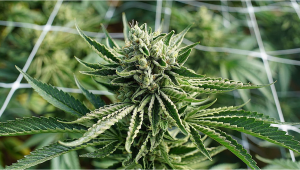
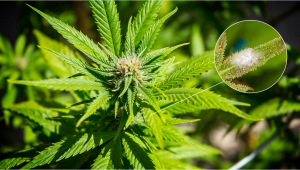
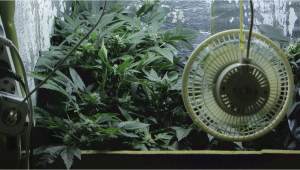

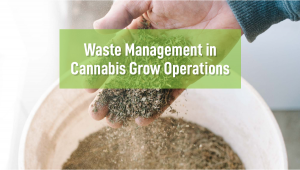
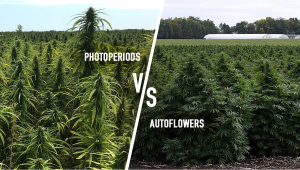


Comments